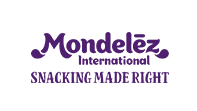Mondelēz 2023 Snacking Made Right Report: Water
| 2023 PROGRESS (9) | 2018 | 2021 | 2022 | 2023 |
| Total incoming water (m3) (without borrowed and rainwater, as per our current KPI definition) | 10,304,000 | 9,886,000 | 9,257,000 | 9,167,000 |
| Total incoming water to priority sites (m3) (without borrowed and rainwater, as per our current KPI definition) | 5,992,000 | 5,621,000 | 5,121,000 | 5,092,000 |
| Absolute water usage reduction in priority sites (vs. 2018) | — | (6.2) % | (14.5) % | (15) % |
“At Mondelēz International we appreciate the importance of water for our planet, communities and as an important ingredient for our delicious products. That’s why we continue to invest in efficiency programs to optimize our water usage across our operations.”
Kevin Akaloo,
Vice President, Global Health, Safety,
and Environment (HSE),
Mondelēz Internationa
Today, a growing number of the world’s most important water systems are under increasing stress. Many of those that support a range of ecosystems, communities and industries, including agriculture, are drying up or becoming polluted through over-use. Climate change is also contributing to the challenge.
This is part of the reason why we at Mondelēz International are aligned with the United Nations’ Sustainable Development Goals (SDGs), with a special focus on the availability and sustainable management of water for all. Our water position is available on our website.
Our business depends on water in multiple ways – from growing and sourcing the raw materials we use to operating our facilities. At every stage, clean water helps us keep our people safe, our supplies secure and our products safe. To promote using it more responsibly, we need to look beyond our own facilities to help ensure it both irrigates the commodities we use and is available to all in the communities where we operate. To make a positive impact, it is important that we partner on water stewardship with the organizations that contribute to the same watersheds as us.
2023 IN REVIEW
For the moment, our water management strategy will remain focused on delivering against our 2025 goal for reducing our water use at priority sites, located in water-stressed areas.
To that end, we implemented a water efficiency program based on strategies and initiatives led by our priority sites that allowed us to reduce our absolute water use at priority sites by approximately (15)% in 2023 (vs. 2018) (9).
The main focus areas of this program include:
- water audits and assessments
- installation of water-efficient equipment and technology
- investment in enhanced reuse and recycling systems
- leak and water-loss prevention
- employee education
- data monitoring and reporting on improvements and cost savings
- benchmarking against industry standards
- monitoring and reporting of evolving regulations
Our Salinas plant in Mexico has implemented a reverse osmosis and water treatment unit to improve water usage efficiency and recycling.
Our factory in Port Elizabeth, South Africa has implemented a recycling project to recover water from processing and reuse it in utilities saving thousands of cubic meters of water in 2023.
Our factory in Recife, Brazil implemented several projects on wastewater treatment focused on recovery of condensation water from industrial air conditioning and moisture recovery from temperature control systems in cookie dough manufacturing, saving thousands of cubic meters of water reprocessing per year.
Our Lad Krabang plant in Thailand achieved reduced water use amid a prolonged dry season due to expanded water conservation efforts.
FUTURE OUTLOOK
As we deliver against our 2025 goal, we continue to identify at-risk watersheds through a process that is informed by our global water risk assessment and business priorities for our operations and supply chain.
In the following years, we aim to develop detailed roadmaps and action plans for key basins that involve local stakeholder consultation, to identify and respond to local water risks in watersheds across our end-to-end supply chain.
Water stewardship will continue to be an important aspect of our governance, with people responsible for realizing our public goals in areas like Board oversight, public dialogue, compliance and accountability. We’ll also continue to consider future water risks and impacts in our strategic decision making.
(9) Priority sites are defined as sites that are located in a high or extremely high water risk zone defined as of 2021. This metric is measured in accordance with our internal Water Supply Management Health Safety and Environment System for priority sites. Reported information excludes developed-market gum brands, which were divested as of October 1, 2023 (which differs from previous years). We have recalculated our base year 2018 (where applicable) and most recent years 2021, 2022 and 2023 for year-over-year comparison. Reported information based on latest estimate; independent, third-party verification in-progress. Any updates, if needed, will be included in the ESG Datasheet. Once completed, SGS verification can be found in our ESG Reporting & Disclosure Reporting Archive.



